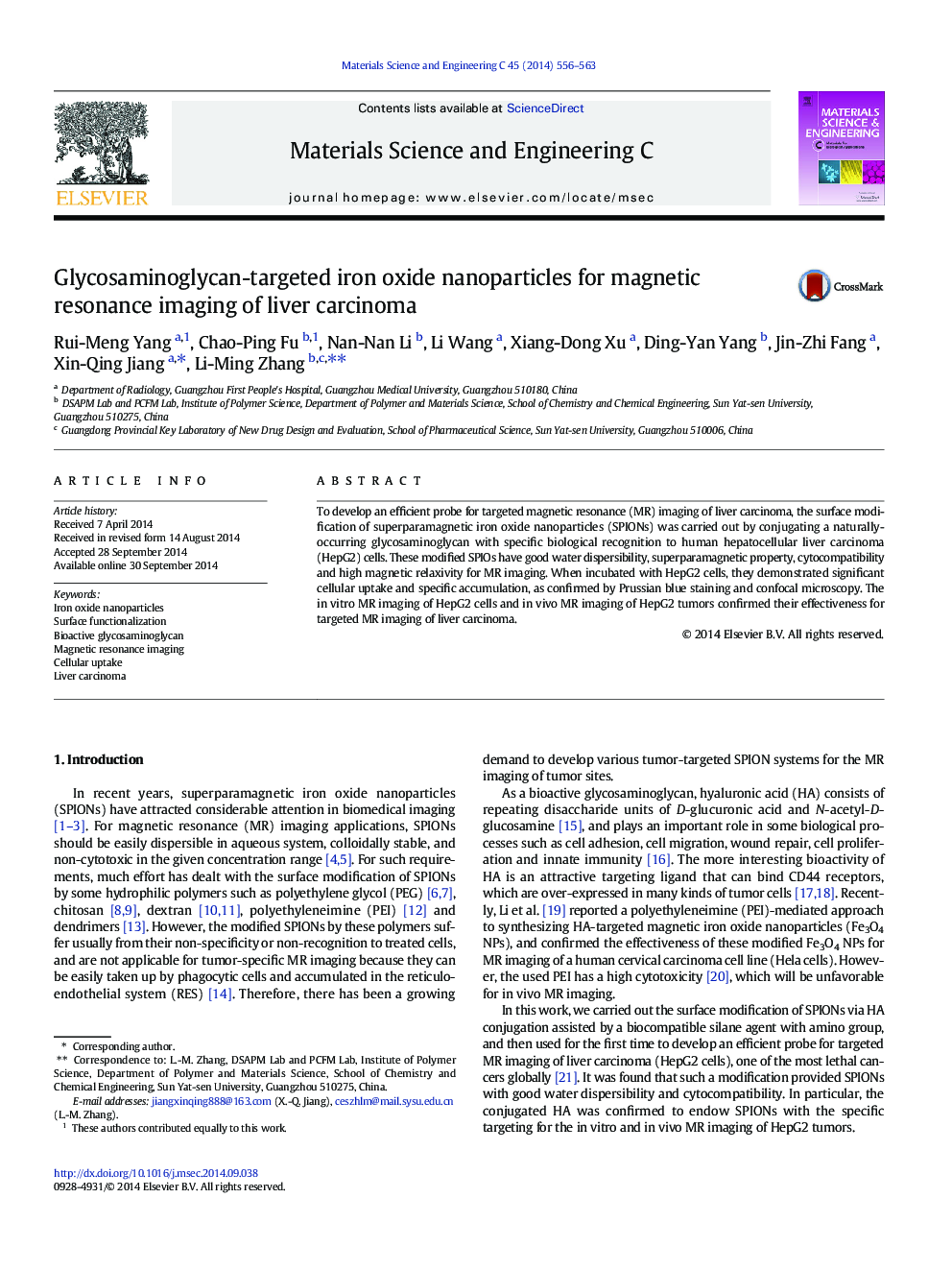| Article ID | Journal | Published Year | Pages | File Type |
|---|---|---|---|---|
| 1428591 | Materials Science and Engineering: C | 2014 | 8 Pages |
•Surface modification of SPIOs by bioactive glycosaminoglycan was carried out.•The modified SPIOs are water-dispersible and colloidally stable in aqueous media.•The modified SPIOs have good cytocompatibility and high magnetic relaxivity.•The modified SPIOs are able to be uptaken specifically by HepG2 cells.•The modified SPIOs can be used for targeted MR imaging of liver carcinoma.
To develop an efficient probe for targeted magnetic resonance (MR) imaging of liver carcinoma, the surface modification of superparamagnetic iron oxide nanoparticles (SPIONs) was carried out by conjugating a naturally-occurring glycosaminoglycan with specific biological recognition to human hepatocellular liver carcinoma (HepG2) cells. These modified SPIOs have good water dispersibility, superparamagnetic property, cytocompatibility and high magnetic relaxivity for MR imaging. When incubated with HepG2 cells, they demonstrated significant cellular uptake and specific accumulation, as confirmed by Prussian blue staining and confocal microscopy. The in vitro MR imaging of HepG2 cells and in vivo MR imaging of HepG2 tumors confirmed their effectiveness for targeted MR imaging of liver carcinoma.
Graphical abstractSurface modification of SPIOs by a naturally-occurring glycosaminoglycan was used successfully for targeted MR imaging of HepG2 tumors in vivo.Figure optionsDownload full-size imageDownload as PowerPoint slide
